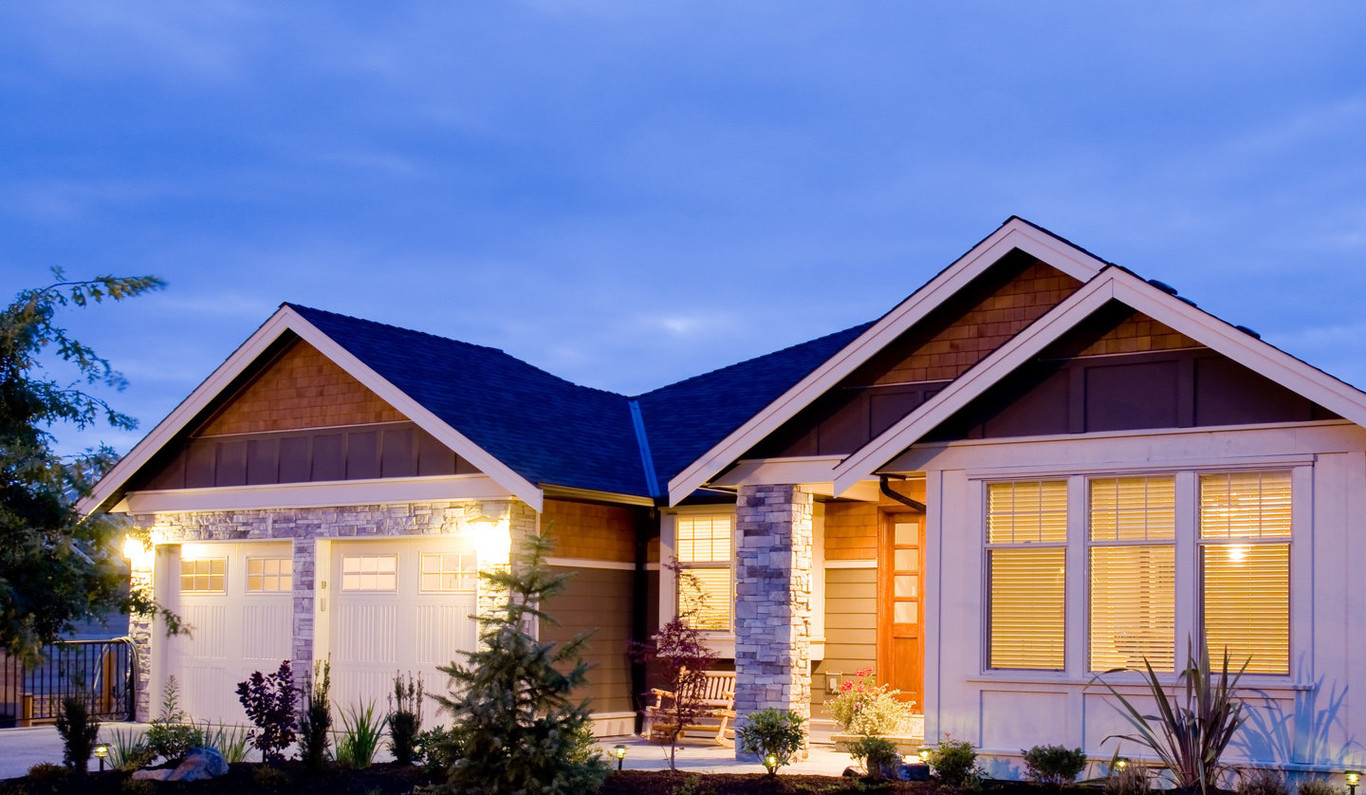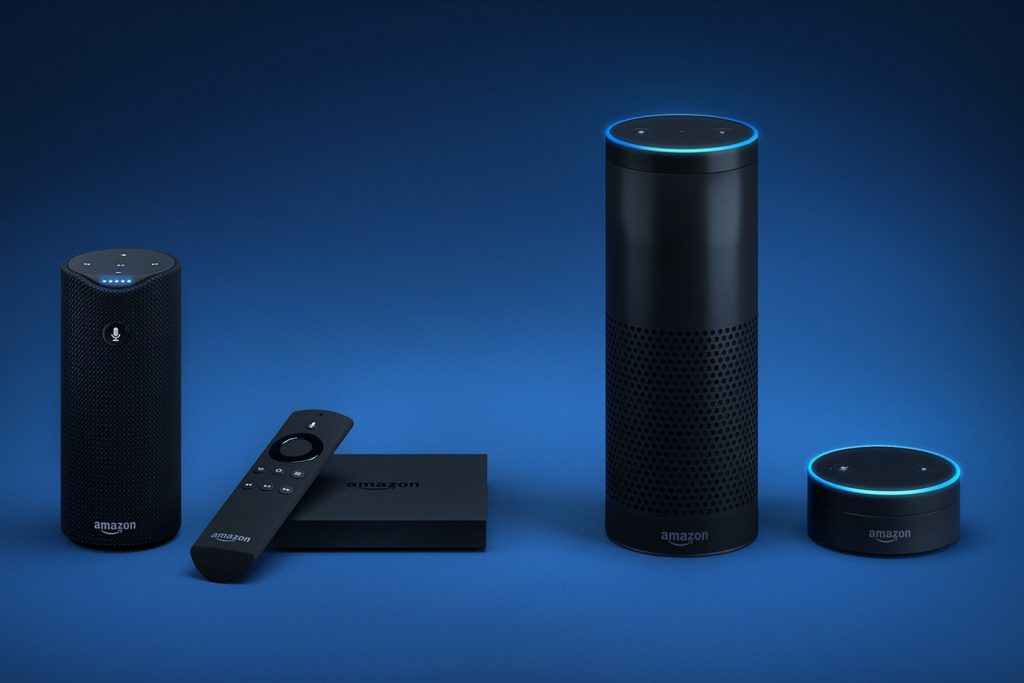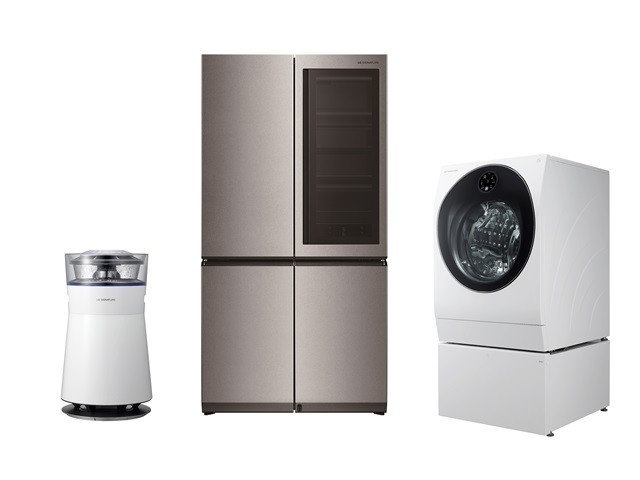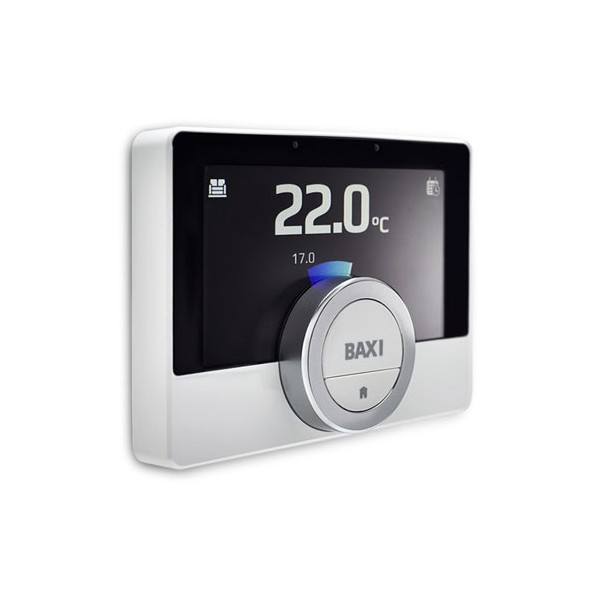A few years ago, home connectivity and home automation systems were only available to a privileged few with sufficient resources to install the different sensors and equipment necessary for the operation of basic applications with rough interfaces and sometimes complex to use.
Fortunately the situation is changing radically and nowadays thanks to the incorporation of small fragments of intelligence in the different devices of the home it is possible to create connected dwellings capable of offering us a multitude of options. However, we still have the problem of fragmentation. That is to say, there are many alternative protocols and brands, often incompatible with each other, so we must choose very well the system that we are going to opt for.
In the last two or three years this diversity has been reduced, or rather concentrated, in what we can call platforms or ecosystems in which the different sensors and domotic elements live. Then we will go over the different popular alternatives, each with its advantages, disadvantages and range of compatible devices.
Amazon and its omnipresent Alexa
Amazon set out to make domotics a more attractive experience for the general public and it seems that it is achieving this thanks to its multiple products and devices. It began with a modest and simple intelligent speaker called Echo but little by little it is extending its domains to multiple and different areas of the connected home.
Basically, it has focused on two strategies: first, to bet on creating its own teams capable of making different functions still somewhat limited, and secondly to open its ecosystem to third companies that are able to implement a common interface adding value to the platform. And it is probably this last point that has been the key to success allowing the development of new capabilities by third parties and even the possibility of installing Alexa on other devices not controlled or manufactured directly by Amazon.
The basic operation of Alexa is very simple. We ask a question or give an order to a compatible device capable of understanding us and this either executes it if it can do it directly or sends the necessary commands transparently for the user to the destination gadget in charge of the task. In this way we can distinguish two types of devices, those with Alexa directly integrated and can understand our orders, such as intelligent speakers, and those who can receive commands or “skills” of these and we will see marked with the typical label ‘Works with Amazon Alexa’.
The process to install the different equipment of the ecosystem begins by buying a device that contains integrated Alexa (for example an Echo speaker), to later go adding different additional elements as long as they are installed in the same local network. We can create groups of devices by zones for example to turn on several lights of a room at one time or the lights and the stereo, etc.
There are thousands of gadgets and devices compatible with Alexa of very different brands, but we must know English to handle them with ease
What devices are compatible with Alexa at this time? Well, thousands, and their number continues to grow day by day, although we must make it clear that their artificial intelligence does not understand all languages. If we speak fairly good English or are able to handle different commands in this language, it should not be a problem, but if we do not do it, it can be an inconvenience.
To start creating an Alexa ecosystem we must first do with one of the Amazon speakers, such as the Amazon Echo. From there we can find a multitude of devices and accessories available on the brand’s own website. There is virtually everything from light bulbs to WiFi repeaters, lighting systems, plugs, speakers etc. Of course, we must bear in mind that many of them are of little known brands.
We also have some Amazon own releases that are not yet available outside of the United States but can be requested for import if we have a lot of interest, such as the interactive Echo Button buttons, the Echo Spot, a new gadget that we can use as a smart watch, Echo Plus, the most powerful version of the original Echo speaker, or the Fire TV multimedia devices of which we can buy the basic version.
But the interesting thing about Alexa is its expansion beyond the Amazon store capturing the interest of manufacturers already positioned in their respective sectors. Thus, in recent months we have attended his arrival at home theater equipment and sound bars of well-established brands such as Denon and Polk Audio, its incorporation in some smart TV, in HP printers, in Acer’s latest 4K projectors or in Hisense air conditioningsystems.
Google Assistant, your new virtual butler
Google also wanted its share of the pie and for that reason in recent years it has been subtly straining its virtual Assistant Google Assistant in our lives. First in the form of software for mobile terminals and with language limitations that have gradually been exceeded with forecasts of exceeding and the more 30 languages. And later as a complete device for the home in the well-used form of a connected speaker capable of helping us with basic tasks.
It was with the arrival from 2017 of the original Google Home, the Home Mini and later of the Home Max when the plans of the giant of the search engines have been shaping beyond the smartphone in two modes: devices with the assistant incorporated inside and equipment They do not have it but they can be managed from them , a strategy very similar to Amazon’s.
Assistant thus opens the door for third-party companies to bet on the Google ecosystem and integrate it into all kinds of gadgets and accessories for the home such as speakers, music equipment, televisions, light bulbs and a long etc., also allowing multi-language support or change language and a few touches of artificial intelligence in the cloud that will be responsible for answering certain simple questions. We can ask about weather information, traffic, check our calendar, flight data, sporting events, request translations of a phrase, dictionary entries, schedule tasks, etc. The virtual assistant will use your AI to try to satisfy our requests in a similar way as it does in a new generation smartphone.
But the most interesting point is found in the ability to interact with domotic equipment, appliances and devices of the Internet of things. If we have a Google Home loudspeaker or a team that incorporates Assistant inside, we can use it directly as a hub or control center for the rest of the connected connected elements of the home. Once detected all the devices in the same network we can give different orders regardless of whether or not they are in the same room.
Depending on the device itself, we can request that lights be turned on or off, change the temperature of a thermostat, access surveillance camera functions, close and open electronic doors, change channels or stations, control multimedia playback, etc. In addition, after the Mobile World Congress of 2018 Google announced that its ecosystem Assistant will allow the support of the so-called routines, that will allow through a simple voice command to perform several programmed actions. For example, telling the assistant “OK Google, I’m home” could turn on the house lights, play music and change the temperature of the air conditioning, or saying “OK Google, activate movie mode” you can lower the blinds, turn off the lights, turn on the TV and activate the surround sound system.
Continue Reading: Dyson lets you control the air quality in your home with new purifiers connected
As we can see, some possibilities are interesting, although of course they depend on how they are finally implemented in the devices and that there are compatible gadgets, something that is increasingly common reaching the most important brands in the consumer electronics sector. Although last year already started to come interesting proposals, this year from CES 2018 the available equipment has grown considerably and recently Google announced that there are already more than 5000 compatible with its ecosystem.
For example, there are already monitors with Assistant brands like Acer or Nvidia with advanced second screen features. It has also reached devices with Android TV as an operating system and has begun its deployment on Sony’s smart TV (for the moment in the United States). The idea is to be able to have the television as a control center for home automation equipment with a more visual interface instead of using a loudspeaker or mobile phone.
In fact, Sony is not the only brand interested. A few months ago Philips showed its own implementation of Assistant on its smart TVs from which we can access services and control connected objects of the company such as Philips Hue lights or their sound bars. We will have control over the thermostats and the lighting of the brand from the TV itself using simple voice commands and pressing a single button on the remote control if we do not want to use the famous “OK Google”.
The Assistant is also present in the lighting systems of brands such as IKEA, in the systems of sensors and domotic control of Devolo, in multiple loudspeakers and sound equipment of brands such as Sony, JBL, Bang & Olufsen or Panasonic and has even called the attention of companies like LG that intend to incorporate it into their next ranges of refrigerators, dishwashers, air conditioning systems, ovens, cleaning robots and dryers adding direct voice control without having to use the mobile. It has also reached the security systems of Nest and some headphones asthese new Bose Quiet Comfort.
Apple HomeKit
Apple could not be left out of the home automation sector and to enter the big door nothing better than take advantage of its broad customer base with an iOS terminal. This is how HomeKit was born, the home automation solution for the brand, offering manufacturers the possibility of integrating their products in iOS in a simple and controllable way from a single application.
HomeKit coordinates the different apps that manage our domotic systems working in the background and making the applications connect with each other so that it is possible to manage them from a single device, including also support for the Siri voice assistant. All this is done from the Apple Home control center of the iOS terminal, who gets in touch with the compatible gadgets that must have the “Works with HomeKit” seal.
This interaction allows us to have a list of the equipment connected to the network with which we can operate, group devices in different locations of the home so that they work together or are related in some way and finally automate actions and behaviors based on multiple parameters and scenarios.
For example, we can program an action to turn off the lights when we leave home or one that activates our TV, media player and sound equipment when we want to watch a movie. All of them controllable from the smartphone or tablet as a remote control.
As we see, in the background is something very similar to what Amazon and Google offer in their respective systems, but focused on the ecosystem of Apple terminals, which has its advantages and disadvantages. If we already have a smartphone of the brand it is probably easy for us to take the step and start buying compatible accessories, but if we are not Apple users we will also have the initial cost of the mobile phone or a tablet.
Are there many accessories, gadgets and compatible devices? Yes, and the list keeps growing. In fact, on Apple’s own website they have an updated catalog with all the products that are coming out all over the world and those that are available in our country of residence.
Among the most prominent we have a bit of everything. There are indoor sensors and surveillance equipment for brands such as Elgato with its Eve Door Window, Eve Energy or Eve Thermo, security cameras such as the new D-Link ranges, air quality meters such as the Netamo Healthy Home Coach, systems of illumination and regulators of intensity of well-known marks like Philips or Ikea, meteorological stations or advanced thermostats like the Lyric Round of Honeywell.
In addition, in the past CES 2018 more compatible equipment was announced that will be arriving in the coming months thanks to agreements with different companies such as Groupe Muller, the new Belkin Bridge that will be responsible for integrating all home automation accessories with HomeKit and even up to Connected showers like this one from Moen will be sold. As we can see, there are many options, although it seems that for the moment the large home entertainment equipment (TVs, home cinema, etc.) and appliances (refrigerators, washing machines, dishwashers, etc.) have not shown much interest in Homekit, maybe because some of the big brands have an ace up their sleeve: create their own domotic ecosystem, as we will see below with the examples of Samsung and LG.
Samsung SmartThings
Unlike the platforms we have seen so far, Samsung decided to consider creating a new domotic ecosystem based mainly on its own appliances and devices, thus avoiding having to depend on third-party companies (although little by little they have been opening up to this possibility). This is how SmartThings emerged, both integrated into some of the brand’s equipment and through the Samsung Connect Home hub that it sold in 2017.
SmartThings also emerges as an evolution of the previous application for Connect smartphones that helped us control the manufacturer’s appliances compatible with the platform and that has now evolved improving the management of all our Samsung equipment (or third-party and compatible) that we have connected to the same network at home.
What can we do with SmartThings? Well the typical of a domotic platform but applied mainly to electrical appliances. Using the mobile application as a remote control of the home we can find compatible devices, manage them, view their status, start their operation, create custom modes to easily control multiple devices with a single command, receive notifications of equipment or alerts depending on the type of equipment that we are using. For example, we can receive an alert if there is someone at the door of the house or a message from the washing machine when it is ready for us to pick up clothes.
Are there many compatible equipment? Well, according to Samsung’s own website there are currently more than 100 of both the company itself and third-party manufacturers (those in which we find the label “Works with SmartThings”), a figure that is considerably lower than the thousands of options in the case of Alexa and Google. However, the ecosystem continues to grow and Koreans continue to align with different companies in the technology sector to increase the possibilities of their platform. For example, a few weeks ago we knew an agreement with Vodafone for the development of new services in the smart home thanks to the use of a new generation of sensors and connected devices.
However, SmartThings is still in the minority, being especially attractive if we are regular consumers of the brand’s products and especially its high ranges of televisions, which we can use as a user interface becoming the hub or master of the home without need to have a separate team. As for the rest of the appliances, the most advanced ranges of washing machines and refrigerators are already compatible with the platform and the brand intends to expand its catalog in the coming months.
LG SmartThinQ
Another major consumer electronics brand that has not wanted to miss the opportunity of the connected home has been LG, whose domotic ecosystem solution has been called SmartThinQ and has followed two strategies: the use of an external device from which to control home to the style of the speakers of Amazon or Google and the most effective formula to integrate the connectivity directly into the appliances.
For the first case, the brand launched in 2016 a small cylinder-shaped device that would be able to connect with all those devices compatible with AllJoyn, a platform for the Internet of Things promoted by Qualcomm that accepts Bluetooth, WiFi or Zigbee devices. It was a kind of communications hub that served as the center of operations for the other connected devices and also had an integrated speaker. However, having already more options in the market it seems logical that finally the most interesting option for the consumer goes through the direct control of their appliances from the same application and without the need to buy accessories separately.
That is why LG has been incorporating more than 100 devices compatible with the SmartThinQ seal in the last two years (although not all of them are available in all countries), including refrigerators, stoves, washing machines, dryers, air conditioners, air purifiers, vacuum cleaners, etc. and has also made them compatible with voice control from Alexa and Google Home or directly from an Android or iOS terminal.
What can we do with SmartThinQ? Well basically control some functions of our appliances and manage their status remotely. For example, the refrigerator sends us notifications to the mobile if we leave the door open or there is some other problem, the washing machine tells us that the washing cycle is over, we can ask the cleaning robot to do its work or control the air conditioning before arriving home.
In addition, as we use the application and the equipment it is assumed that the system is learning about our guidelines and remembering our habits in order to anticipate our needs.








